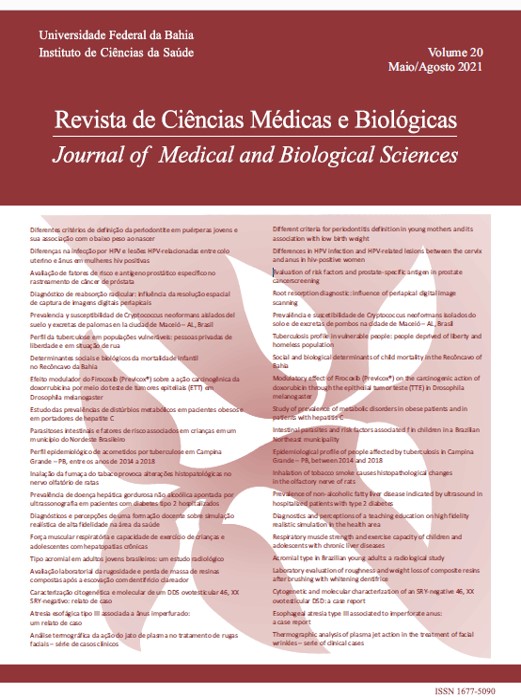Respiratory muscle strength and exercise capacity of children and adolescents with chronic liver diseases Exercise capacity in liver disease
DOI:
https://doi.org/10.9771/cmbio.v20i2.42775Keywords:
Liver Diseases, Chronic Disease, Maximal Respiratory Pressures, Walk TestAbstract
Introdution: Chronic liver diseases are characterized by inflammatory and fibrotic lesions of the liver that cause systemic complications. These complications can negatively interfere with the respiratory muscle strength and exercise capacity of developing children and adolescents. Objectives: To compare respiratory muscle strength and exercise capacity in children and adolescents with chronic hepatopathy, using reference values from healthy individuals of the same age. Methods: A cross-sectional study was performed. Children and adolescents from 6 to 16 years old with chronic hepatopathies were included. For the evaluation of respiratory muscle strength, the maximal respiratory pressures were measured through manovacuometry. A six-minute walk test was used to assess exercise capacity. The Wilcoxon test was used to verify the difference between the evaluated and predicted values of the distance traveled. Results: In total, 40 subjects were analyzed; 57.5% of the subjects were female, and the subjects had a mean age of 11.68±2.82 years. In the comparison between the measured and predicted maximal respiratory pressures, a difference of -17.71 cmH2O (p< 0.001) was found for the maximal inspiratory pressure, and a difference of -30.68 cmH2O (p< 0.001) was found for the maximal expiratory pressure. Regarding exercise capacity, the measured average distance traveled was 346.46±49.21 m, which was 185.54m (p< 0.001) less than the predicted value. Conclusions: Children and adolescents with chronic liver disease have reduced respiratory muscle function and exercise capacity.
Downloads
Downloads
Published
How to Cite
Issue
Section
License
Copyright (c) 2021 Journal of Medical and Biological Sciences

This work is licensed under a Creative Commons Attribution 4.0 International License.
The Journal of Medical and Biological Sciences reserves all copyrights of published works, including translations, allowing, however, their subsequent reproduction as transcription, with proper citation of source, through the Creative Commons license. The periodical has free and free access.


